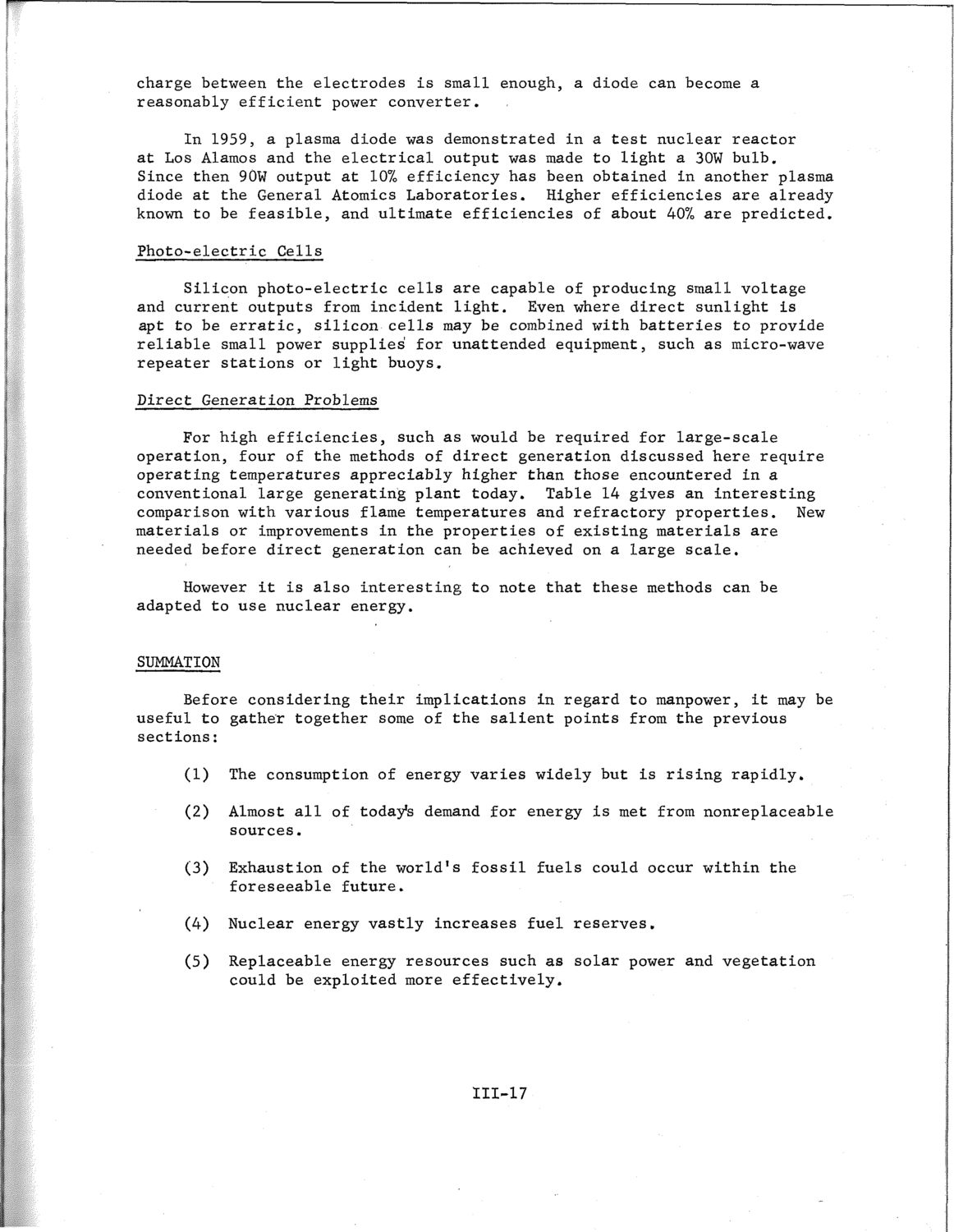| |
| |
Caption: SWE - Proceedings of the First International Conference of Women Engineers and Scientists
This is a reduced-resolution page image for fast online browsing.

EXTRACTED TEXT FROM PAGE:
charge between the electrodes is small enough, a diode can become a reasonably efficient power converter. In 1959, a plasma diode was demonstrated in a test nuclear reactor at Los Alamos and the electrical output was made to light a 30W bulb. Since then 90W output at 107o efficiency has been obtained in another plasma diode at the General Atomics Laboratories. Higher efficiencies are already known to be feasible, and ultimate efficiencies of about 407o are predicted. Photo-electric Cells Silicon photo-electric cells are capable of producing small voltage and current outputs from incident light. Even where direct sunlight is apt to be erratic, silicon cells may be combined with batteries to provide reliable small power supplies' for unattended equipment, such as micro-wave repeater stations or light buoys. Direct Generation Problems For high efficiencies, such as would be required for large-scale operation, four of the methods of direct generation discussed here require operating temperatures appreciably higher than those encountered in a conventional large generating plant today. Table 14 gives an interesting comparison with various flame temperatures and refractory properties. New materials or improvements in the properties of existing materials are needed before direct generation can be achieved on a large scale. However it is also interesting to note that these methods can be adapted to use nuclear energy. SUMMATION Before considering their implications in regard to manpower, it may be useful to gather together some of the salient points from the previous sections: (1) The consumption of energy varies widely but is rising rapidly. (2) Almost all of today's demand for energy is met from nonreplaceable sources. (3) Exhaustion of the world's fossil fuels could occur within the foreseeable future. (4) Nuclear energy vastly increases fuel reserves. (5) Replaceable energy resources such as solar power and vegetation could be exploited more effectively. 111-17
| |